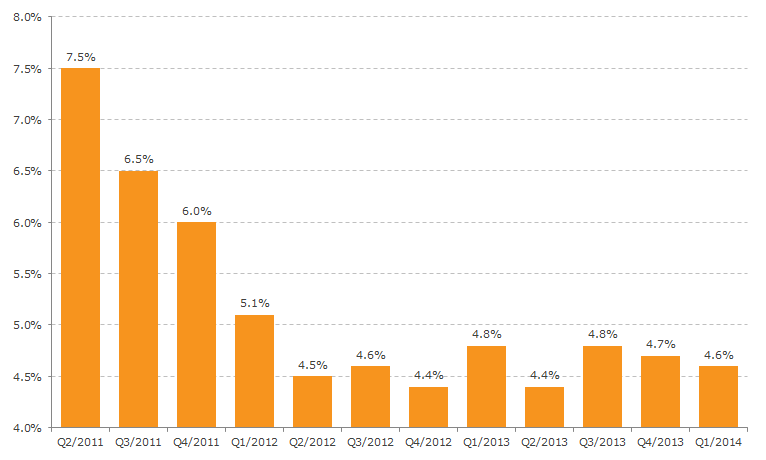September 2014
by Dr. Pia Malaney, Senior Economic Analyst, Institute for New Economic Thinking
India, the world's largest democracy and tenth largest economy, this year vividly illustrated for the world the tight link between politics and economics. The rapidly growing middle class, fed up with declining growth rates and the weak economic policies of the Gandhi led Congress party, recently handed a sweeping victory to Narendra Mody, a highly controversial figure with strong links to far right Hindu Nationalist movement. Mody's government vows to restore investor confidence and reign in inflation, and despite fears amongst some of the threat he presents to India's secularism, his strong electoral mandate and commitment to growth has inspired optimism among the business and investment community, reflected in the soaring Sensex stock index and strengthening currency.
India GDP Annual Growth Rate
Percent Changes in Gross Domestic Product

Sources: Tradingeconomics.com | Ministry of Statistics and Programme Implementation (MOSPI)
About the Author:
Dr. Pia Malaney is the Senior Economic Analyst at the Institute for New Economic Thinking. Her research has focused on economic, biological, and sociological approaches to human welfare while establishing a new Gauge Theoretic foundation for welfare economics that allows for biological and behavioral realism among dynamic economic agents. She has held positions at the Harvard Institute for International Development and the Center for International Development at Harvard's Kennedy School where she has worked in collaboration with Asian and African governments in the development of health care and economic policies. She received her BA from Wellesley College and her PhD from Harvard University.
The article above is an opinion of the author and does not necessarily reflect the opinion of MV Index Solutions or its affiliates.




